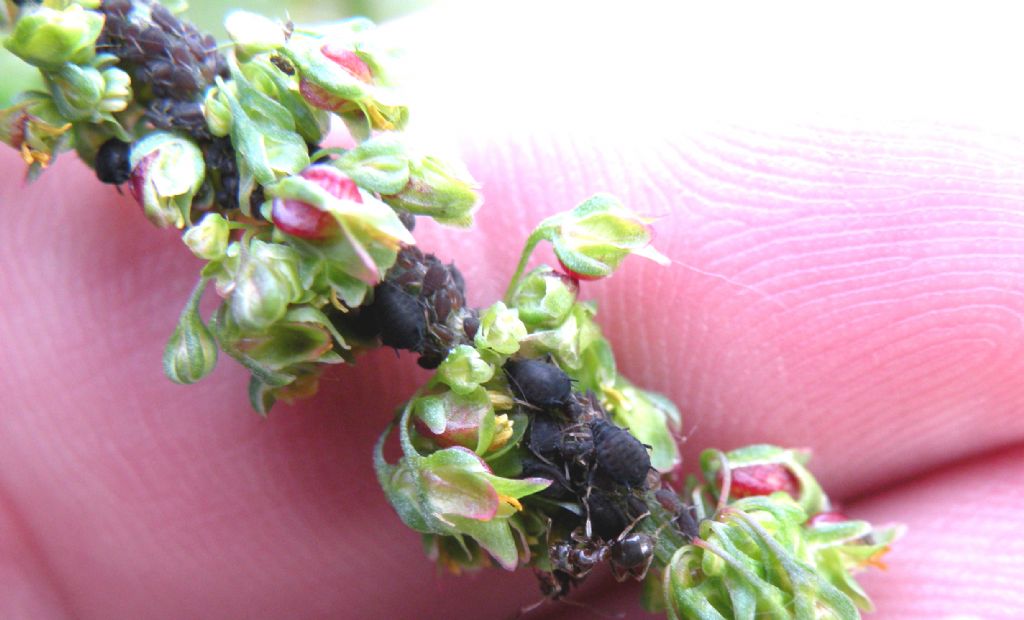|
|
|
|
|
Galleria Tassonomica
di
Natura Mediterraneo
|
|
|
| Autore |
 Discussione Discussione  |
|
|
paolofon
Utente Super
    
Città: Reggio nell'Emilia
Prov.: Reggio Emilia
Regione: Emilia Romagna

7483 Messaggi
Tutti i Forum |
 Inserito il - 13 ottobre 2024 : 17:04:27 Inserito il - 13 ottobre 2024 : 17:04:27


|
Le foto risalgono all'08-06-2013. Le scattai nella RN di Corte Valle Re in piena pianura reggiana.
So quanto è importante nella identificazione degli afidi la pianta su cui si trovano e dalle foto mi sembra di riconoscere una specie del genere Rumex, forse Rumex crispus.
Immagine:

80,06 KB
Immagine:

66,36 KB
La mia ipotesi è che si tratti di Aphis rumicis: mi sono basato sulla descrizione fornita dall'ottimo sito InfluentialPoints.com Link
| | Aphis rumicis: apterae are coal-black to very dark greenish-brown, with black siphunculi and cauda. Their antennae are pale near their bases, but are darkened from the middle of segment III to their tips (cf. Aphis fabae, which usually have segments III-IV and the base of segment V quite pale). Femora, except at base, tips of tibiae and tarsi are dark. Antennae are 6-segmented, 0.6-0.7 times body with the terminal process 2.0-2.8 times base of antennal segment VI. Secondary rhinaria are absent; longest hair on antennal segment III is 1.1-1.7 times the base of that segment. Rostrum reaches past middle coxae, with apical rostral segment 0.95-1.15 times second hind tarsal segment. The hairs on their hind legs are all much longer than the least width of the tibiae. The abdominal dorsum typically has well marked bands across tergites VI-VIII, especially broad on VI, as well as fragmented bands on tergites I-V (cf. Aphis fabae, which normally only has cross bands on tergites VI-VIII, very small on VI). The siphunculi are 0.11-0.15 times body length, 0.9-1.4 times the length of the cauda. The cauda is tongue-shaped with 12-17 hairs. The body length of adult apterae of Aphis rumicis is 2.05-2.77 mm. |
Sarà così?
Grazie   
|
PaoloFon |
|
| |
 Discussione Discussione  |
|
|
|
 Natura Mediterraneo Natura Mediterraneo |
© 2003-2024 Natura Mediterraneo |
 |
|
Leps.it | Herp.it | Lynkos.net
|

 Forum
|
Registrati
|
Msg attivi
|
Msg Recenti
|
Msg Pvt
|
Utenti
|
Galleria |
Map |
Forum
|
Registrati
|
Msg attivi
|
Msg Recenti
|
Msg Pvt
|
Utenti
|
Galleria |
Map |